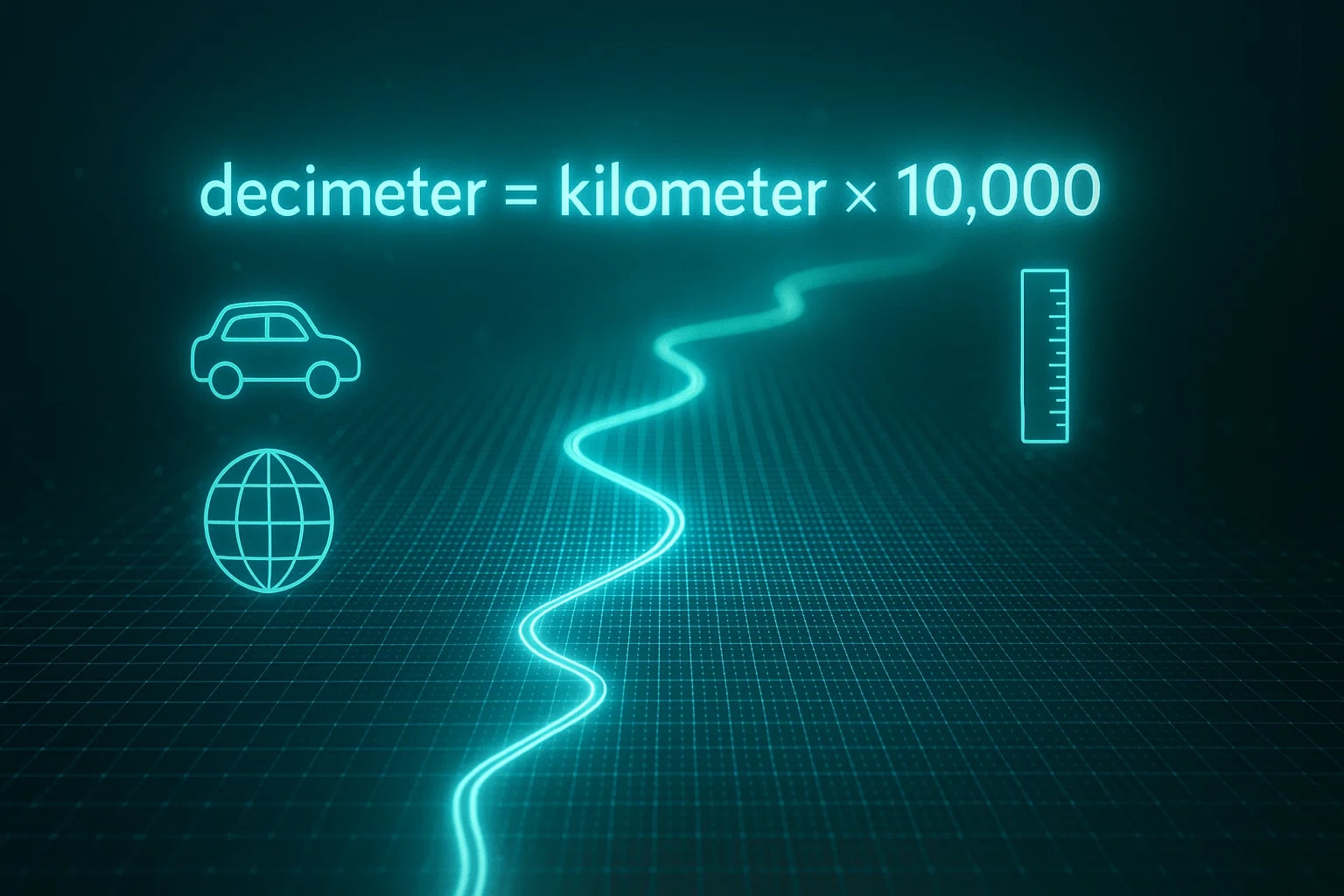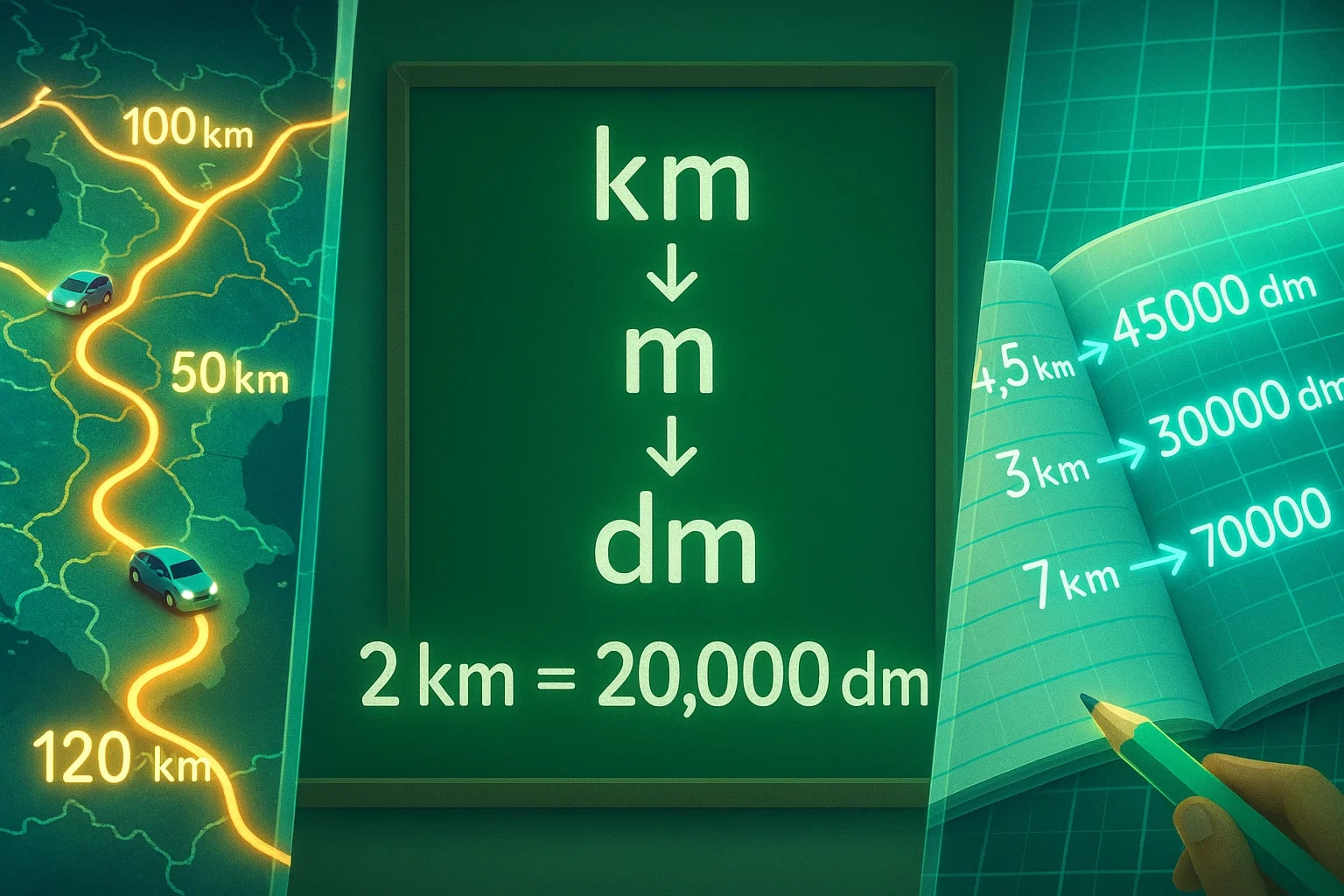kilometer to decimeter – How to convert km to dm
Converting from kilometer to decimeter highlights the flexibility of the metric system, scaling easily between very large and relatively small units. The kilometer is commonly used for road distances and geography, while the decimeter often appears in classrooms and specific scientific contexts. Knowing how to convert km to dm helps connect large-scale measurements with finer divisions.

What is a Kilometer (km)?
A kilometer equals one thousand meters:
1 km = 1000 m.
It is the most common metric unit for describing long distances in maps, travel, and geography.
What is a Decimeter (dm)?
A decimeter equals one tenth of a meter:
1 dm = 0.1 m.
It also equals 10 centimeters or 100 millimeters, often used in educational exercises and some scientific applications.
How to Convert km to dm
The formula is:
decimeter = kilometer × 10 000
For example, let’s convert 3 km into decimeters:
decimeter = 3 × 10 000 = 30 000 dm
So, 3 km = 30 000 dm.
For additional conversions, you can use the Length Converter or check more options in the Conversion Tools.
Do you know?
-
The prefix kilo- means 1000, while deci- means one tenth, showing how easy metric scaling is by powers of ten.
-
Kilometers are used in athletics, like 5 km and 10 km races, while decimeters are often used in math lessons to practice base-10 conversions.
-
A kilometer equals 100 000 centimeters or 1 000 000 millimeters, showing how quickly large units expand into smaller ones.
-
Oceanographers sometimes record water visibility in decimeters for precise readings, while maps universally use kilometers.
From Maps to Classrooms
Kilometers dominate in navigation and mapping, whether for road trips or international travel. Decimeters, however, play a role in education, teaching students how to move up and down the metric ladder.
For example, a math class might ask students to express 2 km in decimeters, which equals 20 000 dm. This not only demonstrates the power of decimals but also prepares learners for real-world contexts where units need to be adjusted.

A Seamless Metric Connection
The conversion from kilometer to decimeter illustrates the clarity of the metric system. Large distances measured in kilometers can quickly be expressed in decimeters by shifting the decimal point.
By mastering this conversion, you can confidently scale between broad geographic measures and smaller educational or scientific contexts.

